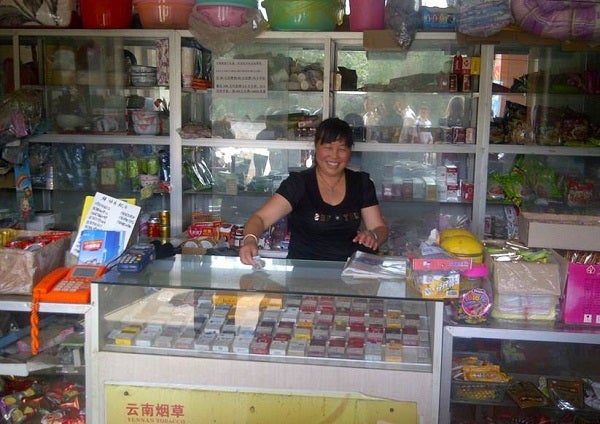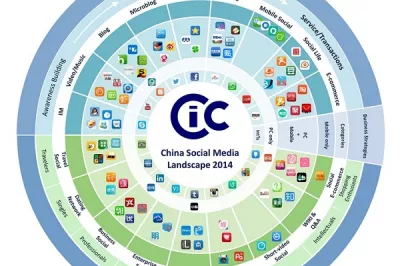China and Kenya: Different Models for Scaling Branchless Banking
Well-known branchless banking success stories from countries like Kenya have demonstrated that mobile money and e-wallets can create important pathways for the expansion of financial inclusion. In China, branchless banking initiatives are beginning to reach scale, but the story has different foundations from Kenya’s.

Unlike Kenya, China already has an extensive banking sector that now serves over 60% of the population. The reach of this system could be even greater given the growing pilots of banking agents. There are over 3 billion debit cards in China and over 40 percent of adults own a bank card. Government policies and programs to expand the banking sector, concerted efforts to simplify the process of opening a bank account (one national ID and less than $1 to open account is all you need), as well as extensive government transfer payments to bank accounts are all driving the successful penetration of formal financial services. But still, close to 40 percent of Chinese adults, especially in rural areas, remain unbanked. This gap has motivated the People’s Bank of China (PBOC) to pursue a wide range of branchless banking pilots that are beginning to mature.
To better understand China’s path to branchless banking, CGAP conducted field research on a major pilot that enables banks to use agents for payments and cash-out in rural areas. The pilot now includes an estimated 500,000 agents for banks and Rural Credit Cooperatives. CGAP spent time in Yunnan and Chongqing provinces studying Chinese agents, both interoperable and exclusive, together with the IFC, PBOC and China Union Pay. Based on in-depth interviews with twelve agents and twelve clients, CGAP found that agents’ transaction volumes were low by international standards - the average is just five transactions per day compared to more than 40 in Kenya. However, clients trust agents, and would use them even more if deposits and new account opening services were allowed.
China's current agent banking business model does not seem attractive for banks yet, mainly because of low economies of scale and the high costs of POS machine deployments. However, China has launched a pilot program to disburse government-to-person payments through bank agents, which may well help drive viability. China’s banks and China Union pay are also still experimenting with interoperability, new technologies and agent fee structures. The use of smart phones to replace the current POS structure could promote viability of the system, as every client and agent interviewed had a smart phone.
Besides the dominant role of the banking sector, a second key difference in branchless banking paradigms of Kenya and China is that China’s robust payment infrastructure and the diverse world of hundreds of third-party payment companies are driving a high level of innovation. In contrast, branchless banking in Kenya is primarily driven by one company, Safaricom. These third-party payment companies work hand in hand with China’s vibrant e-commerce industry and are driving new models of financial inclusion. Alifinance, for example, is part of the Alibaba e-commerce family, and offers microcredit to over 400,000 of its 16 million platform traders using transaction data to measure their credit-worthiness. In its study of Shanghai-based branchless banking innovator F-Road, CGAP has learned that many low-income people in rural areas are actively seeking access to digital payment channels in order to participate in the large and growing virtual marketplace in China.
The role of the regulators in branchless banking is another difference between China and Kenya. Unlike in Kenya, where M-PESA was unregulated for years, China is a country where regulators have tried to keep pace with innovation. In fact, there are already several government regulations and guidelines in place for mobile money, anti-money laundering (AML), combating financial terrorism (CFT), agents, and consumer protection that could foster transformational branchless banking models. At the same time, the pace of innovation is sometimes so fast in China that regulators may find it difficult to measure risks of new services offered on the market.
Kenya, of course, has followed a different trajectory in branchless banking. The prevalence of M-PESA accounts has easily surpassed the usage of formal bank accounts, and now more than 70% of Kenyan adults are registered for an M-PESA account, compared to just 42% with bank accounts. China’s story is the mirror opposite, with bank accounts coming first and now being enhanced by links to millions of e-wallets through mobile giants China Mobile, China Unicom and China Telecom, and more than not to 200 third-party payment providers, such as Alipay.
There are areas of possible alignment, however, between the two countries’ branchless banking models. For example, both countries are experiencing strong growth in e-commerce and e-payments. Merchant e-payments in Kenya are growing quickly through MPESA’s new Lipa Na MPESA product and the work of payment pioneer Kopo Kopo. In both countries, we are also seeing the emerging use of virtual mobile network licenses where non-Mobile Network Operators can now operate in this space, allowing them to leverage those channels to support their own business models. In Kenya, microfinance pioneer Equity Bank has announced that it will apply for this type of license to support its branchless banking work. In China, Alibaba and other third party payment providers have done the same to support the expansion of ecommerce, digital payments and emerging microfinance models.
Starting from a very different reference point, China’s branchless banking paradigm is very different from the M-PESA success story in mobile money but there is a chance that stories may yet find common ground in the future with a more diverse set of providers involved in digital finance.




Comments
There are lessons to be
There are lessons to be learnt from this i.e overregulating innovations and new business models. The 'breather' that the Kenyan government accorded mpesa gave it time to curve out a market and create a marker which previously did not exist. China should learn from this.
Kenyan Chambers
Add new comment